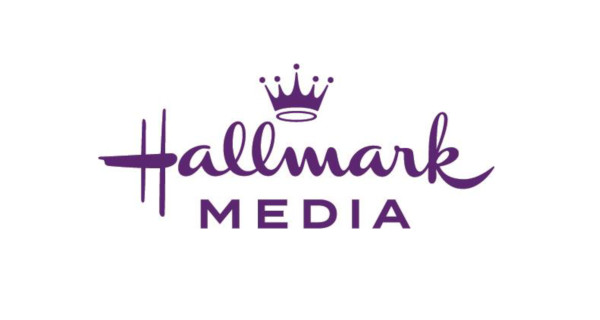In reference to this, does anyone who has access to a computer or a reasonably recent mobile device really yearn for the “good old days?”
Can most visualize making decisions on what to sell, who to sell stuff to and how best to do that without being immersed entirely in the wonderful world of research?
Market research has evolved to astounding depth and breadth. I proffer that much like the biggest ocean-going vessel is hardly a thimble in the water, many research tools, particularly aggregating some, can be paralyzing to most enterprises utilizing even a few tons of it.
Surveys, interviews, focus groups, and customer observation
Those would be the ordinary observational jump-off, fundamental research tools. Not entirely parenthetic to this, somebody please explain to me what “logic branching” really is. I am anxious to lay that on someone.
Data analytics and visualization
That used to be rather simple, when it was entirely unique business and customer data centric. Enter so called “big data.” If you do not forcefully assert that your business is up to its waders in “big data”, you are thought pathetic information-roadkill, with limited likelihood of success going forward.
Really? In the ‘80s, our company was fully immersed in “big data.” Regrettably, we did not coin “big data.” We had just a provincial “database” with a few billion customer focused data points. We had the wherewithal to mesh all that together, then look for value, thus, marketing and advertising direction, by evaluating all relevant data attributes. Then we got slick: sets of data attributes in consort! Then, brace yourselves: we tested all that in real life scenarios.
Once you assemble sufficient customer data and immersively interrogate that, your Eureka moments are reasonably predictable. Thus, the liabilities inherent in live-fire testing are much better quantified and, consequently mitigated.
What did we not have to assert to be elite “big data” users and pushers? Two things: first, a bunch of new-fangled data analytics, visualization software and platforms developed since, and second, computing horse-power. I recall buying excess “computer time” from one of the biggest government contractors in California to crunch our data, in addition to massive twin Crays in Nebraska, contracted to run forty-eight hours straight, every three weeks, to update our non-big-data thing.
For years, I have been contemplating what the Samsung mobile(s) in my pocket can effortlessly crunch.
There are hundreds of data analytics, visualization, SEO tools around, from all sorts of obligatory Google stuff, to other slick monkey wrenches, amusingly named SurveyMonkey and SurveySparrow.
Forgive my arrogance, as popular and acknowledged good the aforementioned tools are, I would loathe to tell people close to me that my business uses anything “monkey.” All those come with hundreds of customizable modules, priced from free trial to the national debt of some third world countries. They all assert to be indispensable force-multipliers in the go-forward marketing paradigm.
So… I was thinking and dipping back into our “good old days”. This is not to disparage our present, which at the rate of indefatigable scientific progress, is soon-to-be-good old days. Mercifully, that brings me to the title of this piece.
A couple years ago, a client (was one – the messenger often gets fired), one of the biggest automakers in the world, came to me with a challenge. They, their internal and external teams’ efforts notwithstanding, experienced significant market share erosion for a popular mid-sized SUV, attributed to a competitive model from another biggie. The latter’s model, at least superficially did not make a bunch of sense, the brand being much more demographically narrow. My task was to identify people who were about to buy the competitive model and drive them back to the home joint.
Interesting when a client has essentially unlimited funds and equally significant human assets – internal and contracted – to do just about anything. Your humble scribe here, forewent the data analytics super-highway the client already had traveled. Rather, whip out my marketing “abacus”: buy videos of the competitor’s TV spots and watch a bunch of network TV. Then, prompted by my wife, she the partner in this union with genuine brains and wonderfully critical thinking, I checked out a top rated network show she had been watching. She asked if the success of “the other” mid-sized SUV might be that two of the lovely stars on that show drove that car? Really cool product placement?
You can envision my client’s reaction to that pedestrian bit of intelligence, however likely accurate.
Back to my “job”. My client was specific: turn would be buyers of the other car to buyers of ours. No interest in just selling more cars: just “best” the other, their insipid naming-convention for selling cars to people who were shopping for the competitor’s specific model. I got schooled on that.
To put a punto finale on this, given our wherewithal on all things Internet, and a friend who was the uber lead generator in the automobile space, finding those folks was not a major challenge. Particularly, that I convinced the client to let us pitch a nifty piece of incentive. In the interest of complete disclosure, we did go forth with our assignment and somewhat ignored the prohibition on just selling more of those cars.
Whip out your abacus, slide-rule and walking shoes?
Focusing on the walking shoes, imagine your sophisticated market research necessitates a briefcase, printed paper, a decent suit (not Brioni), and really good walking shoes? Wondering if that would be your grandfather’s gig, not our modern-wonder-filled world?
Nope.
A client asked that I write the executive summary for their new enterprise. Parenthetic to this, in the tsunami of the first bubble, writing those was a lucrative gig for me. Again, in the interest of full disclosure, I was unclear about the raison d’être of half those businesses: Dot Com Dot Com my …. Dot Com. Still: writing the one and a half pagers was a fun challenge.
They developed a worthwhile reverse-auction platform for a specific segment of small retail. The market was some 65,000 stores, 95% of those single-owned. They developed a marketing campaign to pitch the thing that made genuine sense. I perceived the messaging accomplishing little beyond solidifying the extent to which those business owners were lacking in resources to compete with the biggies. The client was kind to me while he let me know that I just did not understand the degree of their sophisticated research, including all the pillars of market research.
My approach, the client bought into that with genuine reluctance, was indeed “pedestrian” in every sense, including literal! Yes: I borrowed some thinking from Bill Marriott. He knows a bit about customer experience.
I had the client print the most ordinary one pager with specific (read that as minimal) bullet points: benefits and hows only. Then, imagine the horror of it, created an ordinary order form/engagement form – not a purchase order since there was no cost for the customer. I asked the founder/CEO who raised all those millions for this (not his first rodeo) to dress down a tad and put on walking shoes. We walked Manhattan for much of two days, stopped in every likely-customer store, and pitched our thing as simply as the one-pager.
Walked away with three things: some signed deals, bruises we got understanding what we needed to fix in the pitch, how to pitch.
I walked that nice man’s behind off. It cost him a few meals, my meager fee, and options that they ultimately diluted with aplomb.
Have you sat across the one-way mirror observing a live survey? You have…
I remember my first. Also last. My colleagues in the room with me restrained me from going into the interview room and losing my stuff on ten of the twenty people there. Of course, none of the subjects knew who was the subject company. The offenders asserted that among the twenty-five marketing offers on the table, they would never buy from a company like ours. They were all frequent and high value customers.
The survey was conducted by the biggest and best in the space. The umpteen-page report was really impressive.
Had we implemented just three of the twenty imperatives they urged, we likely would have defaulted in paying their bill. Along with our utilities bills.
So that you don’t run my opinionated self out of this world, I am not at all placing an ice blanket on all that is powerful in the market research and analytics space. But, in my humble experience, when all the big mouse-traps in the space tell me that with certainty the sun rises in the West, I am still going to peek outside. As I do before hitting the slopes on tall mountains, no matter what the weather report asserts.
Written by Steven J. Manning.
Have you read?
Most Expensive Men’s Watches In The World.
Most Expensive Women’s Handbags.
Wealthiest Women Entrepreneurs Of 2022.
The Most Expensive Range of Louis Vuitton Shoes.
Best Super-Luxury Cars For CEOs And Executives, 2022.
International Financial Centers Ranking, 2022.
Track Latest News Live on CEOWORLD magazine and get news updates from the United States and around the world.
The views expressed are those of the author and are not necessarily those of the CEOWORLD magazine.
Follow CEOWORLD magazine headlines on Google News, Twitter, and Facebook. For media queries, please contact:
info@ceoworld.biz
























































![Key Metrics for Social Media Marketing [Infographic] Key Metrics for Social Media Marketing [Infographic]](https://www.socialmediatoday.com/imgproxy/nP1lliSbrTbUmhFV6RdAz9qJZFvsstq3IG6orLUMMls/g:ce/rs:fit:770:435/bG9jYWw6Ly8vZGl2ZWltYWdlL3NvY2lhbF9tZWRpYV9yb2lfaW5vZ3JhcGhpYzIucG5n.webp)

















